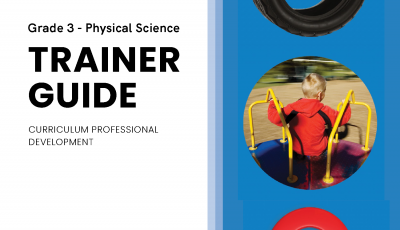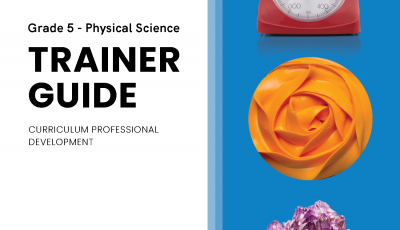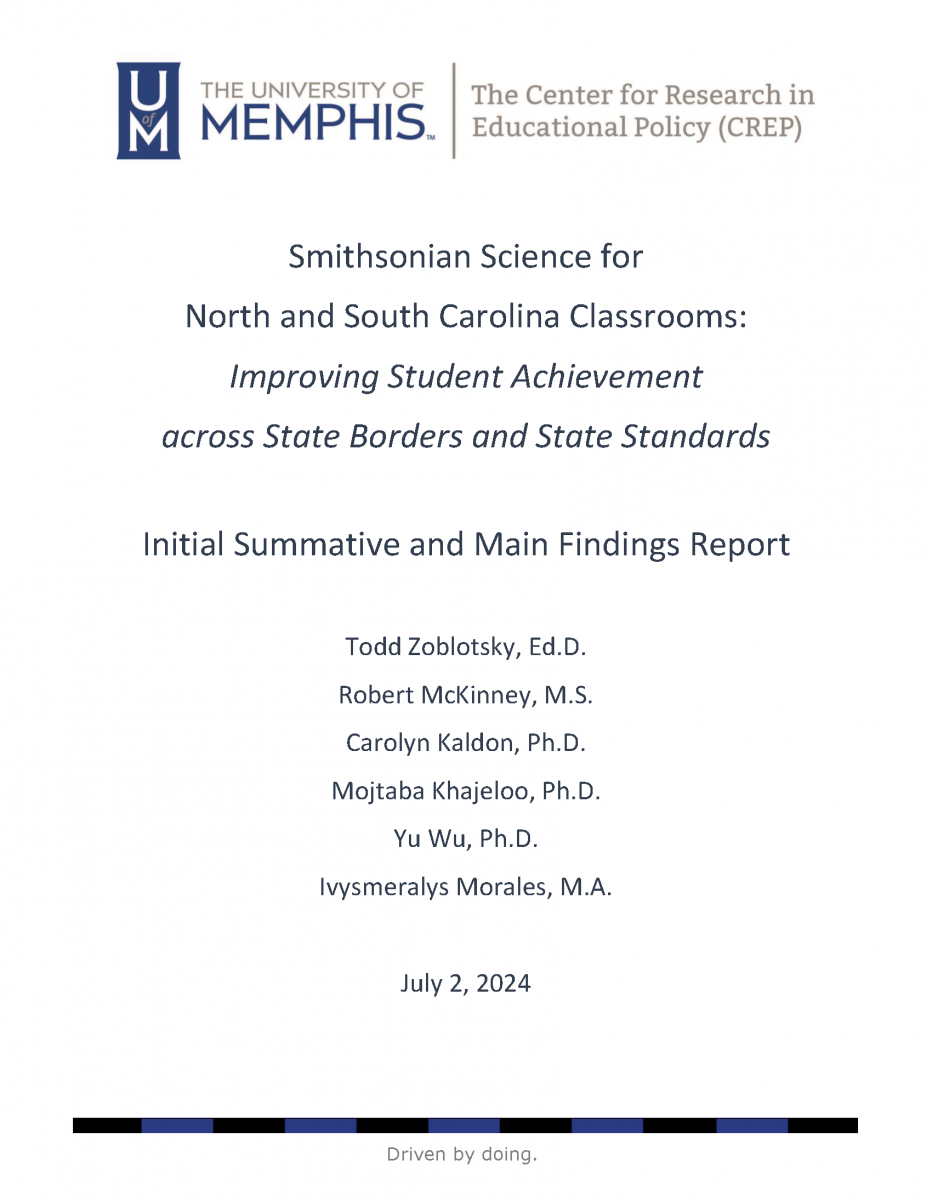Smithsonian Science for NC and SC Classrooms
About the Project
In 2019, the Smithsonian Science Education Center (SSEC) was awarded a $4.5 million early-phase Education Innovation and Research (EIR) grant (PR# U411C190055) for its proposal “Smithsonian Science for the Classroom: Improving Student Achievement Across State Borders and State Standards.” The grant program, administered by the Office of Elementary and Secondary Education (OESE) at the U.S. Department of Education, supports the development, implementation, and initial evaluation of evidence-based innovations to improve student achievement.
The project, titled Smithsonian Science for North and South Carolina Classrooms, launched in October 2019 and ran through September 2024, impacting third, fourth, and fifth grade classrooms in 37 schools across seven districts in North and South Carolina. For more information, contact Katie Gainsback (gainsbackk@si.edu).
Project Goals
The goals of the project were to provide curriculum and content professional development to teachers in an ongoing manner, focused on student learning in science and engineering to result in increased teacher confidence and preparedness that translates to increased student achievement in science, math, and reading.
Project Activities
Participating schools received:
• Smithsonian Science for the Classroom modules at grades 3-5 totaling 406 curriculum modules delivered.
• Professional learning opportunities for each module taught. Ten workshops totaling nearly 190 hours of training were offered.
• Modest stipends for participating grade 3-5 teachers.
• Increased local capacity via a cadre of teachers trained in inquiry-based teaching currently totaling 266 teachers.
• Insight into the impact of phenomenon-based curriculum on student achievement in each state.
North and South Carolina
In North Carolina, the North Carolina Science, Mathematics, and Technology Education Center is the regional partner and liaison and identified Alexander, Burke, Caldwell, and Polk County School Districts to participate. In South Carolina, the South Carolina's Coalition for Mathematics and Science is the regional partner and liaison and identified Marion, Marlboro, and Orangeburg County School Districts to participate.

Evaluation
The Center for Research in Educational Policy (CREP) at the University of Memphis evaluated the impact of Smithsonian Science for the Classroom modules and professional development on student achievement using standardized assessments, classroom observations, teacher surveys, and focus groups. Participating schools were randomly assigned as either “treatment” or “comparison” schools. Treatment schools receive both an engineering and science module at grades 3-5 with two levels of accompanying professional development. Comparison schools taught science using “business-as-usual” for years 1-4 of the research study, and received one module and one level of professional development in the final year of the project.
In November 2024, the National Academies Press highlighted the Smithsonian Science for North and South Carolina Classrooms project in its publication Scaling and Sustaining Pre-K-12 STEM Education Innovations: Systemic Challenges, Systemic Responses. Read more starting on page 372 in the document downloadable on this page https://nap.nationalacademies.org/catalog/27950/scaling-and-sustaining-pre-k-12-stem-education-innovations-systemic.
Read the Executive Summary
Download the Executive Summary
Read the Initial Summative and Main Findings Report
Support for this program is generously provided by:
US Department of Education
Burroughs Wellcome Fund
Carolina Biological Supply Company
South Carolina's Coalition for Mathematics & Science
For more information:
Katie Gainsback, Assistant Division Director of Professional Services
GainsbackK@si.edu
Trainer Guides
-
 Resource
ResourceHow Can We Predict Patterns of Motion? Grade 3 Physical Science Trainer Guide
-
 Resource
ResourceHow Does Motion Energy Change in a Collision? Grade 4 Physical Science Trainer Guide
-
 Resource
ResourceHow Can We Identify Materials Based on Their Properties? Grade 5 Physical Science Trainer Guide
-
 Resource
ResourceUnbalanced Forces Grade 3 Physical Science Trainer Guide
-
 Resource
ResourceMotion Energy Grade 4 Physical Science Trainer Guide
-
 Resource
ResourceProperties of Matter Grade 5 Physical Science Trainer Guide
-
 Resource
ResourceHow Can We Protect Animals When Their Habitat Changes? Grade 3 Engineering Trainer Guide
-
 Resource
ResourceHow Can We Provide Energy to People's Homes? Grade 4 Engineering Trainer Guide
-
 Resource
ResourceHow Can We Provide Freshwater to Those in Need? Grade 5 Engineering Trainer Guide
-
 Resource
ResourceHabitats Grade 3 Engineering Trainer Guide
-
 Resource
ResourceEnergy Grade 4 Engineering Trainer Guide
-
 Resource
ResourceEarth's Systems Grade 5 Engineering Trainer Guide

